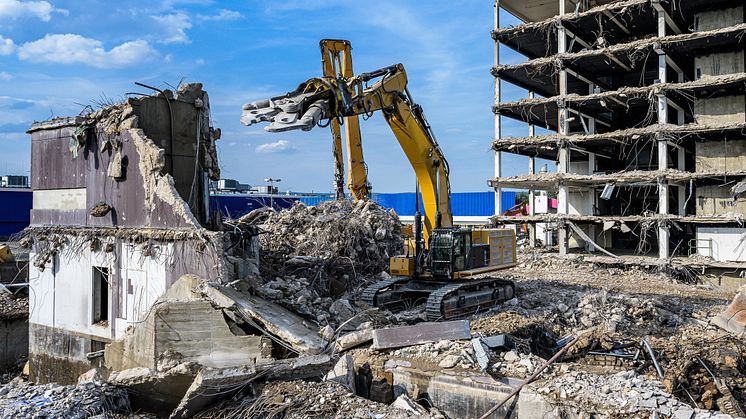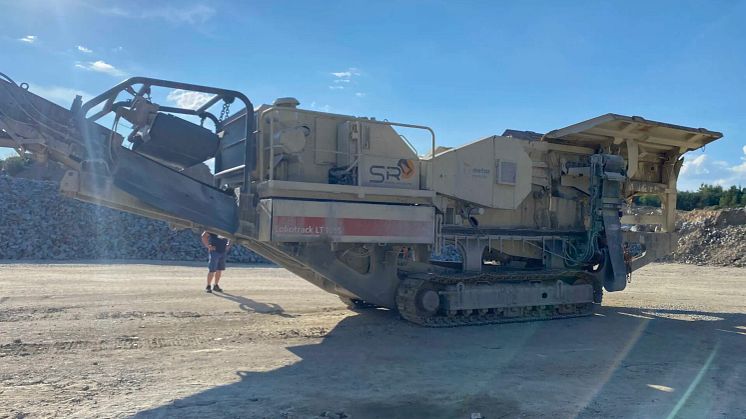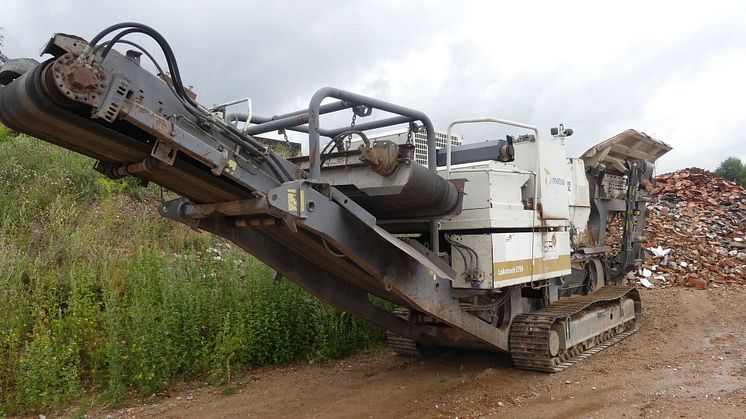
Press release -
From demolition to house: sustainable recycling of construction rubble
Recycling of building materials is becoming increasingly important in times of increasing sustainability. When buildings are demolished, recyclable rubble accumulates. This is crushed, sieved, sorted and processed. Recycled rock can then be reused as a building material. And even the construction machinery used can contribute to a circular economy, as buying and selling used machinery gives it a second life.
Wherever there is construction, there is rubble. And there is also a lot of demolition waste when buildings are torn down. In times of increasing sustainability through circular economy and urban mining, construction waste is not simply dumped and disposed of, but understood as a resource.
In the beginning is demolition
A building can be demolished by either being blown up or by using excavators. They work with shears, cutters, drills or even the famous wrecking ball. As far as possible, the building is dismantled piece by piece so that the materials can be taken out separately. This simplifies the recycling process. Roughly demolished parts are first crushed so that the different materials can then be separated from each other. Wood, concrete, metal and plastic parts are the outcome.
Wood from demolition can usually only be used for incineration. Plastic parts, such as window frames, can hardly be recycled either. The situation is different with metal. And even the mineral materials, such as concrete, plaster, mortar, screed and bricks, can be recycled to a large extent.
With crushers from boulders to usable pebbles
To further process concrete, bricks and other building materials from a demolition, they must first be crushed. Stone crushing machines are used for this purpose. In contrast to mills, crushers do not work in the fine-grain range, but output grain sizes in the coarse to medium size range.
Crushers are classified according to their crushing principle: compression, impact, attrition or shear crushing. The jaw crusher is a frequently used compression crusher in the first stage of processing. This is because it is intended for coarse crushing and reduces the stone diameters by a factor of 3 to 5. Thus, 2 m large blocks become those with a diameter of less than 0.5 m. The crushing chamber is cone-shaped and formed between a fixed jaw and a moving jaw, into which the initial material falls from above.
Between the jaws, the coarse stones are crushed until they break into smaller pieces due to their brittleness. As soon as the grain size is smaller than the outlet diameter of the crushing chamber, the stoneware falls into the collecting container.
A crushing machine always produces granular material in different grain sizes. Therefore, the crushed product must be sieved and sorted so that it can be further processed. The coarse cobbles are then crushed into fine material in cone and roller crushers, while gravel is pulverised in ball mills. In this way, coarse rubble becomes crushed stone, gravel and sand – depending on the application for which the recycled material will be used.
Recycled concrete for building construction and civil engineering
The recycled mineral material can be reused as a building material. Recycled concrete aggregate (RCA) is often used as a base for roads and pavements, as well as as a drainage material for the underground embedding of pipes and lines. Additionally, the material is also raised on embankments and railway lines. Around three quarters of the RCA ends up there. The disadvantage of building material recycling is the immature separation processes. If one wants to work within a cost- and time-efficient framework, the recycled products are not sufficiently pure for all applications.
However, if the demolition material is sufficiently sieved and sorted and the impurities are washed out, RCA can also be reused for higher requirements. This recycled concrete (RC) is a mixture of RCA and primary concrete. It is available in different quality classes, depending on its intended use. As it is susceptible to environmental influences, it is not suitable for civil engineering. However, it is used in building construction: A demolished house becomes a new one.
Construction machinery can also do circular economy
It is not only the recycling of construction materials that can be addressed, but also the way in which construction machinery is procured. Purchasing used equipment can save CO2, raw materials and budget – a goldmine instead of a scrapyard. Industrial auction houses like Surplex specialise in selling used machinery. For example, if a crusher is no longer needed in your own company, Surplex can add it to its portfolio and sell it on. This way, the equipment does not have to be scrapped and finds a new owner.
More than 50 construction machines and vehicles specialised in earthmoving, transport and recycling of construction waste, concrete and asphalt are up for auction on Surplex.com until March 13th. The machines are located in Schweiggers in the district of Zwettl in Lower Austria. Among the equipment there are two mobile jaw crushers from the manufacturer Metso Minerals (now Metso:Outotec). The Lokotrack LT105S and the LT95 are stone crushing machines that work mobile on site at demolished buildings, in tunnel construction or even in quarries under the toughest conditions. The auction also includes various crawler and wheeled excavators as well as rubble transport vehicles.


About Surplex
Surplex is one of Europe’s leading industrial auction houses and trades worldwide with used machinery and equipment. The 16-language auction platform Surplex.com records approximately 50 million-page views annually. More than 55,000 industrial goods are sold each year at more than 800 online auctions. The company is based in Düsseldorf (Germany) and has offices in 15 European countries. Over 220 employees from 20 different nations generate an annual turnover of more than EUR 100 million.



